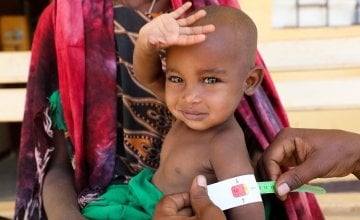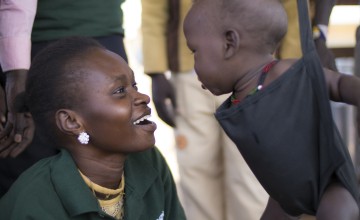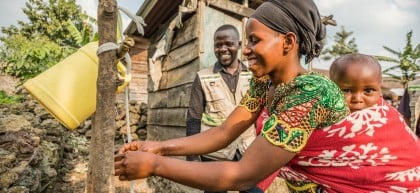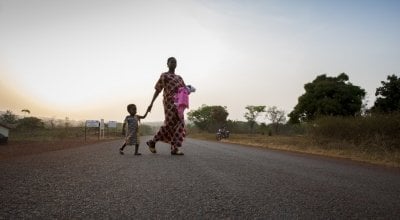
Knowledge Hub
Malnutrition as the new ‘normal’

Take a few minutes to digest this. Twenty-two percent of the world’s children are too short for their age, nearly eight percent are too thin, and around six percent are overweight. Fewer than one in five young children (6-24 months) are eating the basic diet they need for healthy growth.
The world’s future scientists, economists, lawyers, doctors, farmers, teachers, artists, and every other profession you can imagine, are growing with weak bodies and brains. Every country in the world is malnourished. Poor nutrition is costing the global economy US 3.5 trillion dollars year after year.It baffles me that a universal problem of this scale is not making the headlines more often. Has malnutrition become the new normal? Why is slow progress towards the global nutrition targets acceptable? What will it take to get those in power to prioritise a problem that weakens the very foundation of their human and economic capital?
The 2018 Global Nutrition Report (GNR), released last week, once again shines a light on the burden of, and progress made on, malnutrition. The report comprehensively reviews a wide range of data in order to understand the extent of the problem and the data gaps that remain. For example, micronutrient deficiencies continue to be a data black hole, despite affecting billions of individuals. An interesting feature of this year’s report is the data on the most basic factor underlying malnutrition - diets. Be it among infants, adolescents, or adults, the majority of diets are predominantly unhealthy, and poor diets are a leading risk factor for the Global Burden of Disease. So while the report highlights data gaps, it also shows that we are not doing enough even with the data we have and the known solutions.
Attention required
A major area requiring attention is malnutrition (of all forms) in fragile and conflict contexts. Improving nutrition is already a complex and multi-sectoral challenge, and the contexts of crises add further layers of complexity to this. The likelihood of concurrent wasting and stunting is higher in these contexts, and by 2030, the bigger share of extreme poor will live in countries which can be described as fragile and/or conflict-affected. We cannot afford to sit back and wait for solutions to emerge on their own. The global community needs to encourage the synergy of humanitarian and development financing and implementation, alongside peacebuilding for nutrition; and we need more learning of what works in these contexts.
It would be unfair to say there has been no progress on malnutrition, but it is clearly too slow, inadequate, and uneven. More than 150 countries now have national nutrition plans, more than half of which are multi-sectoral, although target setting and financing of plans to realise them needs improvement. Collectively donors have met their 2013 Nutrition for Growth (N4G) financing pledge, and there has been a meagre increase in their spending on obesity and Non-Communicable Diseases (NCDs). However, individually some donors are off track and the overall financing is woefully below what is needed. We have reduced childhood stunting by 10 per cent between 2000 and 2017, but is a 10 per cent reduction enough, when more than 150 million children are stunted?
The report is however, hopeful. It states that “we are at a crossroads… but opportunities to end malnutrition have never been greater,” and offers five steps towards speeding up progress against malnutrition and combatting the risk of reversing the gains already made. These focus on comprehensive and integrated programmes, better data and its efficient use, improved target setting and commitments, a focus on healthy diets, and enhanced quantity and quality of financing.

Looking forward
In 2020, we will have only ten more years to meet the 17 Global Goals, 12 of which are nutrition-relevant. Also in 2020, Japan has committed to host a global nutrition summit. All of us, irrespective of the stakeholder group we belong to - national governments, donors, civil society, private sector, research and academia, or the UN - ought to seize this opportunity to ensure that the children and young people, who will shape our world’s future, have the right foundation to do so effectively, starting with good nutrition.
I personally hope to see the GNR in 2021 focus on the success of the Japan summit, and the leap we have taken on policy and programming for nutrition, based on existing and new data. A report, which no longer presents malnutrition as the new normal.
Disclaimer: I sit on the Independent Expert Group of the Global Nutrition Report.
Anushree Rao
Senior Policy Officer (Nutrition)






